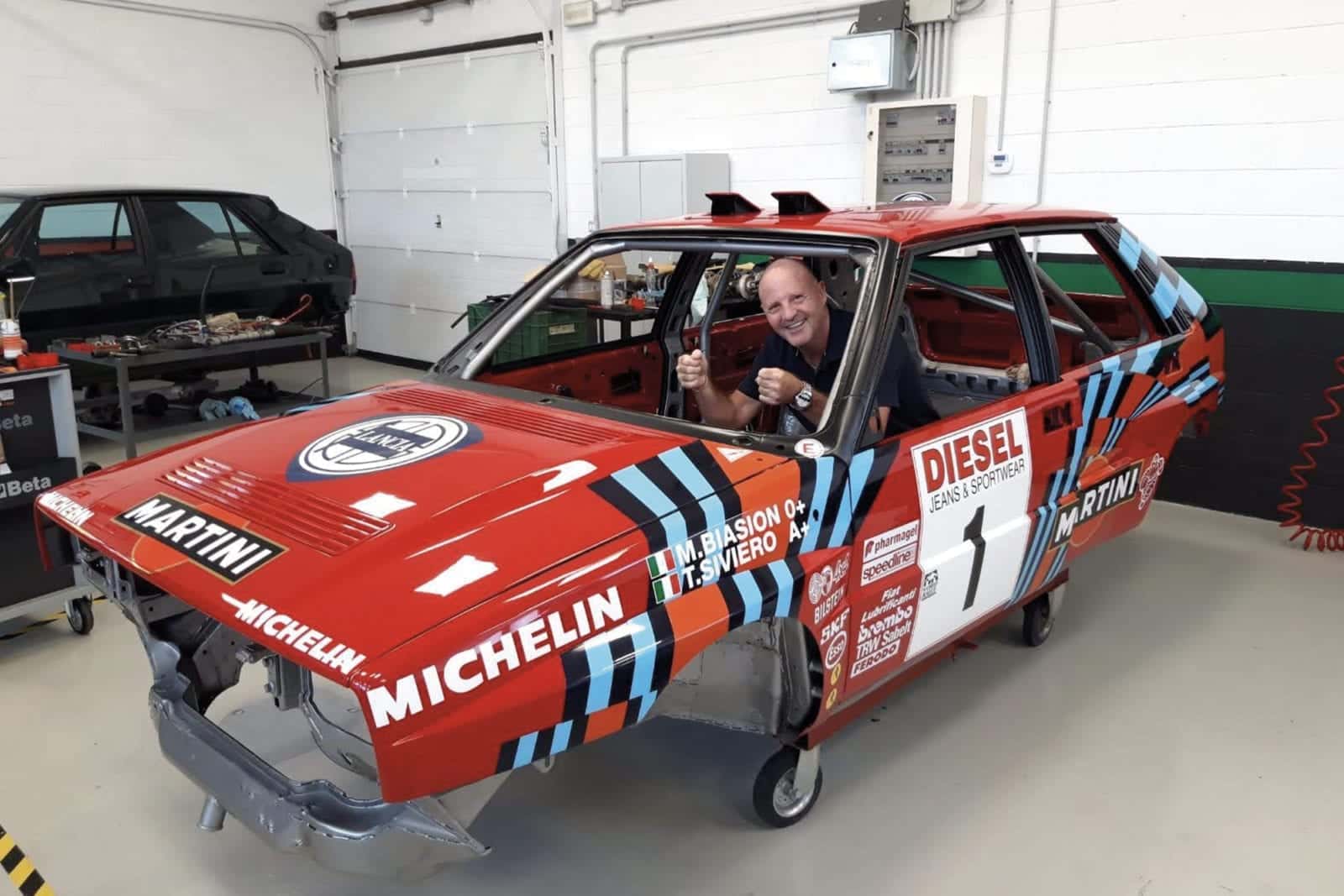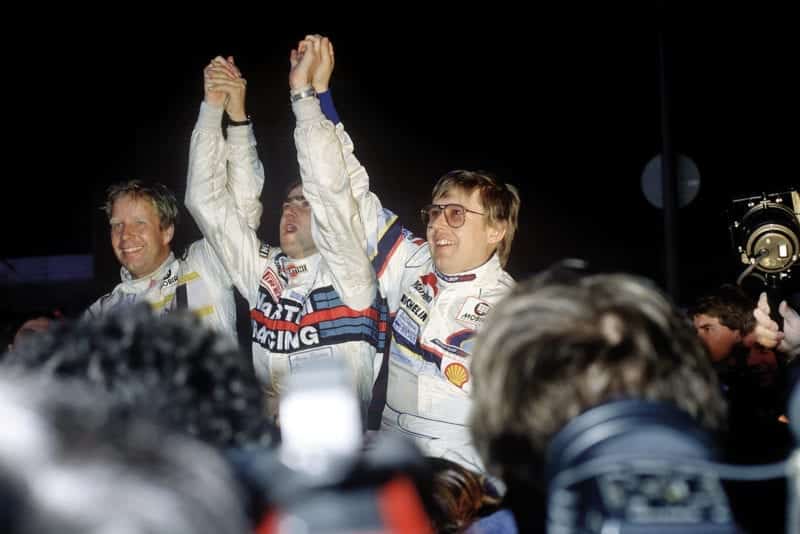Miki Biasion's beloved number one
Miki Biasion won two WRC titles in the Integrale. He’s now celebrating his past with a limited run of the car, as he tells Damien Smith

Biasion 'at the wheel' of one of his 15 recreations as it takes shape in the workshop
Think of Miki Biasion and images of Martini-liveried Lancia Delta Integrales throwing up the dust or scrabbling for grip on asphalt appear. The Italian won back-to- back World Rally Championship titles in Deltas in 1988 and ’89, during a period in which Lancia dominated in a manner that had echoes of McLaren-Honda from the same era in Formula 1.
Today, 62-year-old Biasion is a cherished veteran of rallying’s golden age, and he was due to star with old team-mate and rival Juha Kankkunen at the mouth- watering Goodwood Members’ Meeting Rallysprint at the end of March until you-know-what scuppered everything. Before the big weekend, Motor Sport had planned to catch up with him at the launch of a new special edition Delta Integrale, which Biasion has collaborated in building with Chichester-based Rally Replay. Just 15 bespoke, made-for-order cars will be produced, each to commemorate the 15 WRC victories he scored in Group A Delta Integrales when he was hot stuff between the 1987 Monte Carlo Rally and 1990’s Rally Argentina. Biasion claimed his first WRC win in Argentina in 1986, the final year of the fearsome Group B days. He added a 17th and final victory in 1993 on the Acropolis during his much less successful and unhappy spell with Ford.
Interviews with Miki – at least in English – are rare, so we were excited to be meeting him. Instead, and fittingly in tune with our troubled times, we salvage a remote interview with the double champion to get insight into his new project and scratch the surface of how he recalls the days when Lancia ruled the rallying world.
MS: You are launching a special edition of the Lancia Delta Integrale. What is special about it and how did this project come about?
MB: I have been dreaming of making my own Integrale for many years, and more recently I have been restoring road and ex-works Deltas in Italy, so when the opportunity came up to make 15 special editions, I leapt at the chance. Each of the 15 cars will commemorate one of my 15 WRC victories in the Integrale, and each will be unique. These cars, Rosso e Bianco, are available in white in the livery of my 1988 Sanremo- winning car and in red, the livery of my 1989 Sanremo-winning car. The stickers are optional, the stripes are all painted by hand. The cars will have modern performance and various option packs. The client can essentially choose from a simple enhanced road car to a full historic rally or track car.
Your career is closely associated with the Delta Integrale. Why do you think you enjoyed so much success with the car?
I think it’s because I was involved as the factory test driver from the beginning. I was responsible for the development of the Delta Integrale, so the car was like a part of me, from the beginning, ultimately contributing to the six consecutive manufacturers’ titles [between 1987 and ’92] that we are very proud of.
What was the Group B era like? Were the cars too fast and wild?
The Group B cars of the time were the maximum expression of speed on the road. Unfortunately, they were built purely for performance, not safety.
What are your memories of the Lancia team at that time, particularly after the death of Henri Toivonen [who was killed on the 1986 Corsican rally]? Was it hard to continue rallying?
I have lost many friends and colleagues: Attilio Bettega [works Lancia driver, killed in an 037 on Corsica 1985], Henri Toivonen and Sergio Cresto [Toivonen’s co-driver who died with him]. A team always looks ahead, and a driver never thinks about a fatal accident.
In the following Group A era, you were hugely successful. What was the transition to Group A from Group B like for the team and was it easy for you as a driver to adapt?
It was initially depressing to go from almost 600bhp to 230bhp at the beginning of Group A, but if we look at 1986-87, the top drivers were the same. A top driver adapts to the car and the regulations.

Toivonen’s Monte ’86 win, Biasion rated him highly
Why do you think you were able to win so many rallies between 1987 and ’90, particularly given how competitive that era was?
Each driver has a period of high competitiveness. My period was from 1983 to 1993, and the peak of this was from 1987 to 1990.
Of all the great rally drivers you drove against, who did you respect the most? And who was the fastest?
Walter Röhrl, Markku Alén and Juha Kankkunen were fantastic – and the fastest was probably Toivonen.
What do you think of the WRC today? And how does it compare with the 1980s?
Today’s WRC cars are exceptional cars and rallying is enjoying a lot of new popularity thanks to online streaming like WRC+. A lot of good work has happened promoting rallying again after many years with little coverage. The rallying is very different to the Group B era of the 1980s, we raced with extreme levels of power on long rallies, but the result is the same, Rallying is still exciting and a spectacular event to watch live or online.
